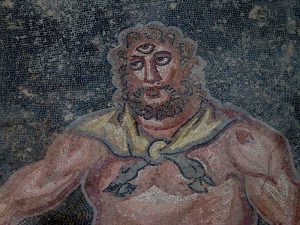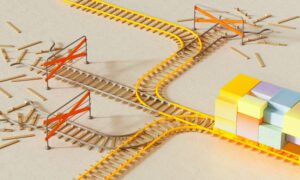TARDIGRADES, INVISIBLE MICROSCOPIC AND INDESTRUCTIBLE LITTLE ANIMALS
6 min read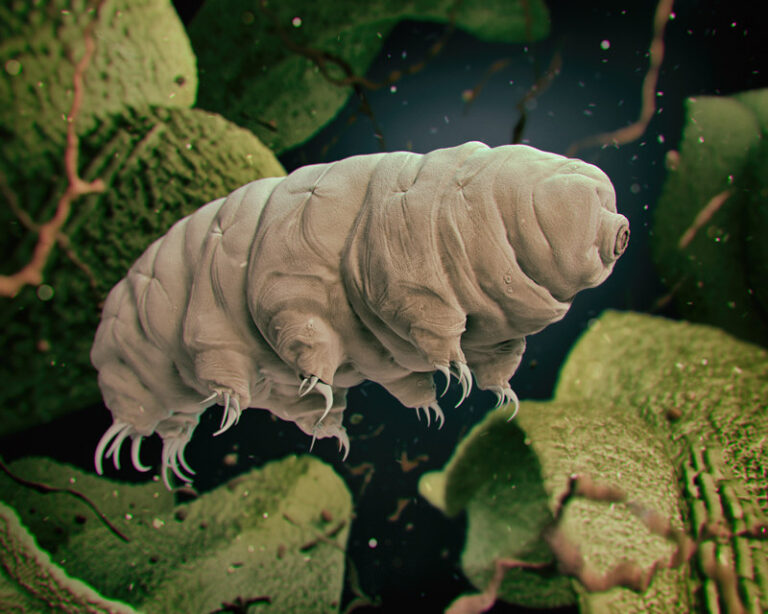
Tardigrades, you surely have heard about them: they are microscopic invertebrates protostomes celomates.
The protostomes are a superphylum, the animals which are a part of them are united by a very specific characteristics: the buccal region it comes to form from an embryonic fundamental structure called blastophore. As it concerns the term “celomates”, it’s always in relation to the embryonic development: in fact, the coelom is an internal cavity that contains a liquid, bounded by the mesoderm, one of the embryonic tissue from which it will develop different types of “adult” tissues. In these grouping we can find for example the clams.
Framed their position in the animal reign, we can step on/ move forward to the name: “tardigrade”, from the Latin tardigrădus (tardus = slow + grades = walking), or animals which walk slowly. This name was given in 1777 by Lazzaro Spallanzani, italian biologist; they were already known by 1773, year in which the German zoologist Johann August Ephraim Goeze observed them for the first time and called them “Bärtierchen”, or animals with the shape of a bear. The resemblance with bears, particularly the similarity with their heavy and slow moves, influenced also the English term with which it refers to these animals, who effectively are known as water bears.
To observe them is necessary a microscope, it may be enough also an optic microscope since that an adult individual it’s between 0,1 and 1,5 mm long, to admire them while they are walking on their 8 tiny paws.
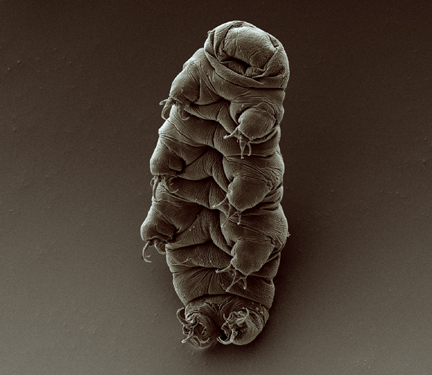
They are ubiquitous animals, or they can be found everywhere. This is given to the fact that they are extremely resilient, characteristics that has made them famous in the last years, but also because there are more than 1000 species. They thus succeeded in the enterprise of colonizing both salt and fresh water and the land, always preferring wetlands that are rich of mosses and lichens. For this reason we can find them both in the garden and in the ices of the Antarctic.
The tardigrades are capable of resisting to temperatures that go from absolute zero (-273°) to 150°, to high pressure, to the cosmic emptiness to UV and X rays and to several chemical products.
In optimal conditions of humidity and food reserve, the tardigrade can live from few weeks to a maximum of two years and a half. But when the conditions become extreme and hard, they face a phenomena known as cryptobiosis.
The cryptobiosis is an ametabolical state: the metabolic processes block, no activity tied to the development, the reparation of the tissues and to the reproduction happens. It’s an important capacity that allows to resist to to hard environmental conditions for the life, a sort of deep numbness, of dormancy, that can last ideally for an undetermined time to then restart the organism from the same identical point from which it had stopped as soon as the condition become favorable again.
It exists different types of cryptobiosis but guess what? The tardigrades can adopt them all to answer to the different environmental needs.
- Anhydrobiosis: the animal finds himself to face long periods of scarcity of water and therefore undergoes drying. The lack of more than 95% of water happens for evaporation and all of the metabolic processes bloc, withdraw head and legs contracting, staying immobilized.
- Criobiosis: it’s given to particularly low temperatures, this defense mechanism consents him to survive to freezing. Important: it’s fundamental that the cooling down phase happens very slowly to avoid the formation of water crystals that would do damaging cells and tissues, compromising the functionality of the organism. In this state, the animal can stay for several years. Entering in criobiosis provides for a first preparatory phase in which happens the 99% of the water from the organism which instead gets rich of a particular sugar, the trehalose, capable of stabilizing the cell membranes of these animals, and of glycerol, both function as a natural antifreeze, protecting the cells from injuries. In this phase, though, they are particularly vulnerable, especially to UV rays.
- Anoxybiosis: this phenomena is induced by low levels or absence of oxygen. The tardigrade freezes stiffening and can remain in this state up to 5 days, except for the aquatic species that can resist in this condition maximum 3 days
- Osmobiosis: it’s experimented for a very wide range of different saline concentrations. It’s an ability of aquatic tardigrades: it allows to the one of fresh water to concentrate in a highly salty environment, while to the one of salt water to adapt into the fresh water
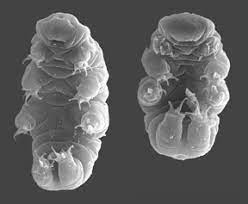
Not for nothing the tardigrades are the resilient animals for excellence! Thanks to their adaptive skills they are a case study for several years.
In particular, it is studying how the tardigrades capacities can be exploited to improve man’s physical resistance in the space.
Just like that, this tiny invertebrates non only find themselves in every part of the globe, both on the land and in the water, they also have arrived in the space! It has been discovered that they can survive also on the outside of spatial vehicles suggesting that they can be a good vector of panspermia.
The panspermia it’s an hypothesis according to which the seed or the seeds of life are scattered around the universe. For “seed of life” we also mean simple organic molecules which, if casually encounter favorable conditions, they settle and develop into them. To probe in detail the hypothesis of lithopanspermia, that is the possibility that can take place the transfer of life forms from a planetary surface to another inside rocks that travel into space (like comets) and can meet to astronomic impacts. At the University of Kent it has been studied the capacity of these micro beings to survive to impact shock, whose entity in terms of velocity and resulting impact pressures, constitutes the limiting factor of the theory.
For this reason I will talk you about the lunar expedition of the Israeli lander Beresheet and his little happy epilogue.
In April of 2019 he crashed on the Moon, and with it all of its load: the first lunar library in DVD format containing 30 million of pages of information, human DNA samples and also them, the tardigrades.
Potentially, on the lunar surface there are this nice tiny animals in cryptobiosis. Obviously just in case they managed to survive the impact.
To understand if there is the possibility that the tardigrades have survived, thanks to their peculiar adaptive characteristics, have been brought forward some studies to test if the tardigrades can survive to typical impacts until 0,9km -1 s, or a 1,1 Gpa of impact pressure, but they can not survive to higher impacts. Besides, they were fired at high speed with a gun on sand targets, subjecting them to impact shocks to evaluate its survival. The results highlight though that the probability that a tardigrade survives to the collision with the lunar surface verges on zero: the only possibility of survival is to impact the surface at low speeds in favorable ballistic trajectories, but it has been estimated that only the 40% circa of the material that impacts has this fortune that might offer some survival chances.
In August of 2019 it was rumored of a possible recovery mission to verify the sorts of these resistant animals that, despite the catastrophic event, could give us new information on their potentialities. How many new research possibilities could open if they had survived? Which applications would allow this discovery? The advantages for the man?
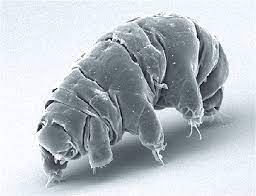
A lot of questions arise evaluating some microscopic invertebrate creatures that have demonstrated an uncommon resistance and we cannot not stay in waiting to find out how many things they have in store for us.
Who knows if we will soon find out if they were the first invertebrate terrestrial animals to set foot to the Moon and to manage to survive.

Sono Sara, studentessa di lingue e culture per il commercio internazionale presso l’Università di Verona. Amo scoprire nuove culture e tradizioni attraverso il viaggio, grazie al quale mi sono appassionata alle lingue straniere, ed in particolar modo all’inglese e allo spagnolo. Tra le mie passioni figurano la danza e il canto, due discipline che mi accompagnano sin da piccola e attraverso le quali riesco ad esprimere me stessa, così come la lettura di libri, trascorrere il tempo ascoltando musica e guardare film e serie TV. Uso inoltre la scrittura (creativa e non) come valvola di sfogo per fuggire dalla realtà quando mi ci sento intrappolata. Se mi chiedessero cosa è per me la comunicazione al giorno d’oggi potrei tranquillamente dire che è uno dei vettori su cui si basa la società moderna, ed è perciò di fondamentale importanza veicolarla correttamente


